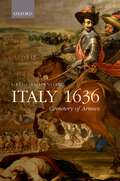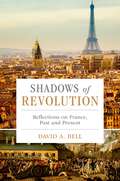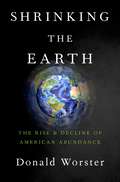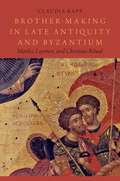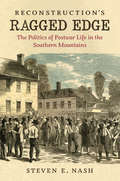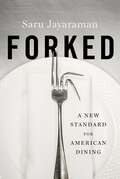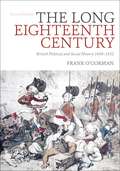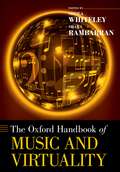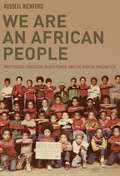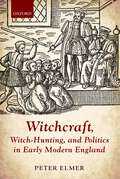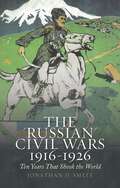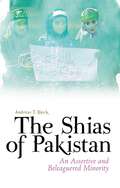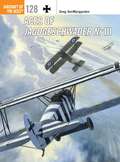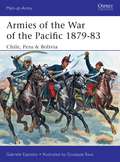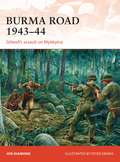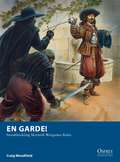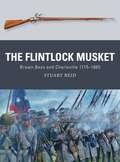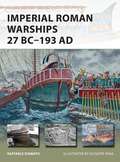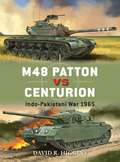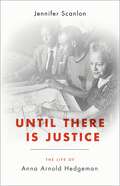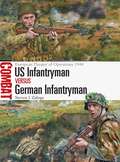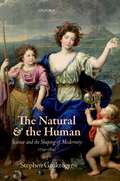- Table View
- List View
Italy 1636: Cemetery of Armies
by Gregory HanlonItaly 1636 is one of the most closely-researched and detailed books on the operation of early modern armies anywhere, and is explicitly inspired by neo-Darwinian thinking. Taking the French and Savoyard invasion of Spanish Lombardy in 1636 as its specific example, it begins with the recruitment of the soldiers, the care and feeding of the armies and their horses, the impact of the invasion on civilians in the path of their advance, and the manner in which generals conducted their campaign in response to the information at their disposal. The next section describes the unfolding of the long and stubborn battle of Tornavento, where Spanish, German, and Italian soldiers stormed the French in their entrenchments, detailing the tactics of both the infantry and the cavalry, and re-evaluating the effectiveness of Spanish methods in the 1630s. The account focuses on the motivations of soldiers to fight, and how they reacted to the stress of combat. Gregory Hanlon arrives at surprising conclusions on the conditions under which they were ready to kill their adversaries, and when they were content to intimidate them into retiring. The volume concludes by examining the penchant for looting of the soldiery in the aftermath of battle, the methods of treating wounded soldiers in the Milan hospital, the horrific consequences of hygienic breakdown in the French camp, and the strategic failure of the invasion in the aftermath of battle. This in turn underscores the surprising resilience of Spanish policies and Spanish arms in Europe. In describing with painstaking detail the invasion of 1636, Hanlon explores the universal features of human behaviour and psychology as they relate to violence and war.
Shadows of Revolution: Reflections on France, Past and Present
by David A. BellRenowned historian, essayist, and journalist David A. Bell has long made France and its history the subject of his scholarly gaze and the object of his enduring affection. Shadows of Revolution: Reflections on France, Past and Present gathers together his writing, composed over a period of more than 25 years, into a single volume. As the title of this collection suggests, Bell views much of French history through the lens of the Revolutionary era. Within a space of a dozen years, from Bastille to Bonaparte, the country experimented with and experienced every form of governance, creating in the process, as Bell puts it, "the most intense political laboratory the world had ever known." The Revolution remains the country's defining era, delineating its sense of identity and overshadowing the events that followed it. Yet another, Bell argues, is the Vichy period and World War Two-France's dark night of the soul-with whose legacies the country continues to contend. These two moments of violent and transformative upheaval may dominate French history, but as this collection and Bell's observational powers reveal, the full range of topics involving France is endlessly rich and diverse. Divided into eight sections, it connects France's education to its national identity, the Enlightenment to the Revolution and human rights, Napoleon to Victor Hugo, and nineteenth-century anti-Semitism to such recent events such as the riots of 2006, the Arab Spring, and the Charlie Hebdo tragedy. Shadows of Revolution embodies and reflects the endlessly fascinating and entertaining complexity of French history, and shows the ways in which it has shaped world history.
Shrinking the Earth: The Rise and Decline of Natural Abundance
by Donald WorsterThe discovery of the Americas around 1500 AD was an extraordinary watershed in human experience. It gave rise to the modern period of human ecology, a phenomenon global in scope that set in motion profound changes in almost every society on earth. This new period, which saw the depletion of the lands of the New World, proved tragic for some, triumphant for others, and powerfully affecting for all. In this work, acclaimed environmental historian Donald Worster takes a global view in his examination of the ways in which complex issues of worldwide abundance and scarcity have shaped American society and behavior over three centuries. Looking at the limits nature imposes on human ambitions, he questions whether America today is in the midst of a shift from a culture of abundance to a culture of limits--and whether American consumption has become reliant on the global South. Worster engages with key political, economic, and environmental thinkers while presenting his own interpretation of the role of capitalism and government in issues of wealth, abundance, and scarcity. Acknowledging the earth's agency throughout human history, Shrinking the Earth offers a compelling explanation of how we have arrived where we are and a hopeful way forward on a planet that is no longer as large as it once was.
Cathedrals of Britain (Shire Library)
by David PepinCathedrals are awe-inspiring buildings. Most are grand medieval structures, while others appear simple and unpretentious – yet all were designed to reflect the glory of God and have a profound impact on us. As trailblazers of architectural development, each cathedral has distinct individual features – such as the powerful Norman Romanesque west towers of Durham, the unique octagonal tower at Ely, and the daring late Gothic finery and spaciousness at Gloucester. In this lavishly illustrated guide to cathedrals from Bangor to York, with profiles of Roman Catholic and Scottish cathedrals, David Pepin outlines the evolution of architectural style, each building's key features, and the ongoing story of daily worship, wide-ranging ministry, conservation, the new work of craftspeople, and the increasing numbers of pilgrims and visitors.
Brother-Making in Late Antiquity and Byzantium: Monks, Laymen, and Christian Ritual (Onassis Series in Hellenic Culture)
by Claudia RappAmong medieval Christian societies, Byzantium is unique in preserving an ecclesiastical ritual of adelphopoiesis, which pronounces two men, not related by birth, as brothers for life. It has its origin as a spiritual blessing in the monastic world of late antiquity, and it becomes a popular social networking strategy among lay people from the ninth century onwards, even finding application in recent times. Located at the intersection of religion and society, brother-making exemplifies how social practice can become ritualized and subsequently subjected to attempts of ecclesiastical and legal control. Controversially, adelphopoiesis was at the center of a modern debate about the existence of same-sex unions in medieval Europe. This book, the first ever comprehensive history of this unique feature of Byzantine life, argues persuasively that the ecclesiastical ritual to bless a relationship between two men bears no resemblance to marriage. Wide-ranging in its use of sources, from a complete census of the manuscripts containing the ritual of adelphopoiesis to the literature and archaeology of early monasticism, and from the works of hagiographers, historiographers, and legal experts in Byzantium to comparative material in the Latin West and the Slavic world, Brother-Making in Late Antiquity and Byzantium examines the fascinating religious and social features of the ritual, shedding light on little known aspects of Byzantine society.
Reconstruction's Ragged Edge: The Politics of Postwar Life in the Southern Mountains (Civil War America)
by Steven E. NashIn this illuminating study, Steven E. Nash chronicles the history of Reconstruction as it unfolded in the mountains of western North Carolina. Nash presents a complex story of the region's grappling with the war's aftermath, examining the persistent wartime loyalties that informed bitter power struggles between factions of white mountaineers determined to rule. For a brief period, an influx of federal governmental power enabled white anti-Confederates to ally with former slaves in order to lift the Republican Party to power locally and in the state as a whole. Republican success led to a violent response from a transformed class of elites, however, who claimed legitimacy from the antebellum period while pushing for greater integration into the market-oriented New South.Focusing on a region that is still underrepresented in the Reconstruction historiography, Nash illuminates the diversity and complexity of Appalachian political and economic machinations, while bringing to light the broad and complicated issues the era posed to the South and the nation as a whole.
Forked: A New Standard for American Dining
by Saru JayaramanA restaurant critic can tell you about the chef. A menu can tell you about the farm-sourced ingredients. Now who's going to tell you about the people preparing your meal? From 2015 James Beard Leadership Award winner Saru Jayaraman, Forked is an enlightening examination of what we don't talk about when we talk about restaurants: Is the line cook working through a case of stomach flu because he doesn't get paid sick days? Is the busser not being promoted because he speaks with an accent? Is the server tolerating sexual harassment because tips are her only income? As most corporate restaurants continue to set low standards for worker wages and benefits, a new class of chefs and restaurateurs is working to foster sustainability in their food and their employees. Forked offers an insider's view of the highest--and lowest--scoring restaurants for worker pay and benefits in each sector of the restaurant industry, and with it, a new way of thinking about how and where we eat.
The Long Eighteenth Century: British Political and Social History 1688-1832
by Frank O'GormanThis long-awaited second edition sees this classic text by a leading scholar given a new lease of life. It comes complete with a wealth of original material on a range of topics and takes into account the vital research that has been undertaken in the field in the last two decades.The book considers the development of the internal structure of Britain and explores the growing sense of British nationhood. It looks at the role of religion in matters of state and society, in addition to society's own move towards a class-based system. Commercial and imperial expansion, Britain's role in Europe and the early stages of liberalism are also examined. This new edition is fully updated to include: - Revised and thorough treatments of the themes of gender and religion and of the 1832 Reform Act- New sections on 'Commerce and Empire' and 'Britain and Europe'- Several new maps and charts- A revised introduction and a more extensive conclusion- Updated note sections and bibliographies The Long Eighteenth Century is the essential text for any student seeking to understand the nuances of this absorbing period of British history.
The Long Eighteenth Century: British Political and Social History 1688-1832
by Frank O'GormanThis long-awaited second edition sees this classic text by a leading scholar given a new lease of life. It comes complete with a wealth of original material on a range of topics and takes into account the vital research that has been undertaken in the field in the last two decades.The book considers the development of the internal structure of Britain and explores the growing sense of British nationhood. It looks at the role of religion in matters of state and society, in addition to society's own move towards a class-based system. Commercial and imperial expansion, Britain's role in Europe and the early stages of liberalism are also examined. This new edition is fully updated to include: - Revised and thorough treatments of the themes of gender and religion and of the 1832 Reform Act- New sections on 'Commerce and Empire' and 'Britain and Europe'- Several new maps and charts- A revised introduction and a more extensive conclusion- Updated note sections and bibliographies The Long Eighteenth Century is the essential text for any student seeking to understand the nuances of this absorbing period of British history.
The Oxford Handbook of Music and Virtuality (Oxford Handbooks)
by Sheila Whiteley Shara RambarranHas the virtual invaded the realm of the real, or has the real expanded its definition to include what once was characterized as virtual? With the continual evolution of digital technology, this distinction grows increasingly hazy. But perhaps the distinction has become obsolete; perhaps it is time to pay attention to the intersections, mutations, and transmigrations of the virtual and the real. Certainly it is time to reinterpret the practice and study of music. The Oxford Handbook of Music and Virtuality, edited by Sheila Whiteley and Shara Rambarran, is the first book to offer a kaleidoscope of interdisciplinary perspectives from scholars around the globe on the way in which virtuality mediates the dissemination, acquisition, performance, creation, and reimagining of music. The Oxford Handbook of Music and Virtuality addresses eight themes that often overlap and interact with one another. Questions of the role of the audience, artistic agency, individual and communal identity, subjectivity, and spatiality repeatedly arise. Authors specifically explore phenomena including holographic musicians and virtual bands, and the benefits and detriments surrounding the free circulation of music on the internet. In addition, the book investigates the way in which fans and musicians negotiate gender identities as well as the dynamics of audience participation and community building in a virtual environment. The handbook rehistoricizes the virtual by tracing its progression from cartoons in the 1950s to current industry innovations and changes in practice. Well-grounded and wide-reaching, this is a book that students of any number of disciplines, from Music to Cultural Studies, have awaited.
We Are an African People: Independent Education, Black Power, and the Radical Imagination
by Russell RickfordDuring the height of the Black Power movement of the late 1960s and 1970s, dozens of Pan African nationalist private schools, from preschools to post-secondary ventures, appeared in urban settings across the United States. The small, independent enterprises were often accused of teaching hate and were routinely harassed by authorities. Yet these institutions served as critical mechanisms for transmitting black consciousness. Founded by activist-intellectuals and other radicalized veterans of the civil rights movement, the schools strove not simply to bolster the academic skills and self-esteem of inner-city African-American youth but also to decolonize minds and foster a vigorous and regenerative sense of African identity. In We Are An African People, historian Russell Rickford traces the intellectual lives of these autonomous black institutions, established dedicated to pursuing the self-determination that the integrationist civil rights movement had failed to provide. Influenced by Third World theorists and anticolonial campaigns, organizers of the schools saw formal education as a means of creating a vanguard of young activists devoted to the struggle for black political sovereignty throughout the world. Most of the institutions were short-lived, and they offered only modest numbers of children a genuine alternative to substandard, inner-city public schools. Yet their stories reveal much about Pan Africanism as a social and intellectual movement and as a key part of an indigenous black nationalism. Rickford uses this largely forgotten movement to explore a particularly fertile period of political, cultural, and social revitalization that strove to revolutionize African American life and envision an alternate society. Reframing the post-civil rights era as a period of innovative organizing, he depicts the prelude to the modern Afrocentric movement and contributes to the ongoing conversation about urban educational reform, race, and identity.
Witchcraft, Witch-Hunting, and Politics in Early Modern England
by Peter ElmerWitchcraft, Witch-hunting, and Politics in Early Modern England constitutes a wide-ranging and original overview of the place of witchcraft and witch-hunting in the broader culture of early modern England. Based on a mass of new evidence extracted from a range of archives, both local and national, it seeks to relate the rise and decline of belief in witchcraft, alongside the legal prosecution of witches, to the wider political culture of the period. Building on the seminal work of scholars such as Stuart Clark, Ian Bostridge, and Jonathan Barry, Peter Elmer demonstrates how learned discussion of witchcraft, as well as the trials of those suspected of the crime, were shaped by religious and political imperatives in the period from the passage of the witchcraft statute of 1563 to the repeal of the various laws on witchcraft. In the process, Elmer sheds new light upon various issues relating to the role of witchcraft in English society, including the problematic relationship between puritanism and witchcraft as well as the process of decline.
The "Russian" Civil Wars, 1916-1926: Ten Years That Shook the World
by Jonathan SmeleThis volume offers a comprehensive and original analysis and reconceptualisation of the compendium of struggles that wracked the collapsing Tsarist empire and the emergent USSR, profoundly affecting the history of the twentieth century. Indeed, the reverberations of those decade-long wars echo to the present day - not despite, but because of the collapse of the Soviet Union, which re-opened many old wounds, from the Baltic to the Caucasus. Contemporary memorialising and 'de-memorialising' of these wars, therefore form part of the book's focus, but at its heart lie the struggles between various Russian political and military forces which sought to inherit and preserve, or even expand, the territory of the tsars, overlain with examinations of the attempts of many non-Russian national and religious groups to divide the former empire. The reasons why some of the latter were successful (Poland and Finland, for example), while others (Ukraine, Georgia and the Muslim Basmachi) were not, are as much the author's concern as are explanations as to why the chief victors of the 'Russian' Civil Wars were the Bolsheviks. Tellingly, the work begins and ends with battles in Central Asia - a theatre of the 'Russian' Civil Wars that was closer to Mumbai than it was to Moscow.
The Shias of Pakistan: An Assertive and Beleaguered Minority
by Andreas RieckThe Shias of Pakistan are the world's second largest Shia community after that of Iran, but comprise only 10-15 per cent of Pakistan's population. In recent decades Sunni extremists have increasingly targeted them with hate propaganda and terrorism, yet paradoxically Shias have always been fully integrated into all sections of political, professional and social life without suffering any discrimination. In mainstream politics, the Shia- Sunni divide has never been an issue in Pakistan. Shia politicians in Pakistan have usually downplayed their religious beliefs, but there have always been individuals and groups who emphasised their Shia identity, and who zealously campaigned for equal rights for the Shias wherever and whenever they perceived these to be threatened. Shia 'ulama' have been at the forefront of communal activism in Pakistan since 1949, but Shia laymen also participated in such organisations, as they had in pre-partition India. Based mainly on Urdu sources, Rieck's book examines, first, the history of Pakistan's Shias, including their communal organisations, the growth of the Shia 'ulama' class, of religious schools and rivalry between "orthodox" "ulama" and popular preachers; second, the outcome of lobbying of successive Pakistan governments by Shia organisations; and third, the Shia-Sunni conflict, which is increasingly virulent due to the state's failure to combat Sunni extremism.
Aces of Jagdgeschwader Nr III (Aircraft of the Aces)
by Harry Dempsey Mark Postlethwaite Greg VanWyngardenRoyal Prussian Jagdgeschwader Nr III was the third of Germany's vaunted fighter wings to be formed during World War 1. Commanded by the Pour le Mérite winner and well-respected ace Hauptmann Bruno Loerzer for its entire existence, it was composed of the celebrated Jasta 'Boelcke', along with Jagdstaffeln 26, 27 and 36. Equipped largely with the new Fokker triplane, these four units would play an important role in the Kaiserschlacht as part of the 17. Armee.As Germany's fortunes waned in the summer of 1918, the aces of JG III nonetheless did their best to stem the tides of British, French and later American aircraft they encountered. Aces such as Carl Bolle, Paul Bäumer, Heinrich Bongartz, Hermann Frommherz, Rudolf Klimke and the infamous Hermann Göring all carved their names in the record books flying in this formidable formation. This book examines the tactics, achievements and personalities of one of the deadliest of Germany's aerial units.
Armies of the War of the Pacific 1879–83: Chile, Peru & Bolivia (Men-at-Arms)
by Giuseppe Rava Gabriele EspositoThe Pacific War was the greatest and bloodiest war ever fought in the Andean region, and is one of the most important conflicts in South American history. It is also known as the 'Saltpeter War' or the 'Guano War' because the possession of these two highly profitable nitrates was the main cause of the conflict.By the 1870s Chilean military superiority and expansionist policies exploded into full scale conflict. This book examines the troops, uniforms and equipment used by the Chilean, Peruvian and Bolivian forces and traces the events of the war from the early naval blockades, through major pitched battles, to the final guerilla campaign in occupied Peru. The war ended in total victory for Chile, and that country's military emergence thereafter as 'the Prussia of South America', while it cost Peru some lucrative provinces, and Bolivia its outlet to the Pacific coast.
Burma Road 1943–44: Stilwell's assault on Myitkyina (Campaign)
by Peter Dennis Jon DiamondMyitkyina was a vital objective in the Allied re-conquest of Burma in 1943–44. Following the disastrous retreat from Burma in April 1942, China had become isolated from re-supply except for the dangerous air route for US transports over the Himalaya Mountains. The Burma Road, which ran from Lashio (south of Myitkyina) through the mountains to Kunming was closed as a supply route from Rangoon after the Japanese conquest. Without military assistance, China would be forced to surrender and Imperial Japanese Army forces could be diverted to other Pacific war zones.This is the history of the ambitious joint Allied assault led by American Lt. Gen. Joseph W Stilwell and featuring British, American and Chinese forces as they clashed with three skilled regiments of the Japanese 18th Division. Packed with first-hand accounts, specially commissioned artwork, maps and illustrations and dozens of rare photographs this book reveals the incredible Allied attack on Myitkyina.
En Garde!: Swashbuckling Skirmish Wargames Rules (Osprey Wargames)
by Craig Woodfield Peter DennisEn Garde! is a small-scale skirmish game based on the successful Ronin rules, in which small groups of warriors fight each other for honour or riches. Rather than just rolling a few dice, the rules allow players to make tactical decisions about how the models that they control will fight – offensively, defensively, or by applying special skills and abilities. En Garde! covers the conflicts of the 16th, 17th and early 18th centuries, when black-powder weapons started to become common in battle but martial prowess still determined the outcome. Play as Border Reivers, Conquistadors, Landsknechts, Aztecs, French Musketeers, Caribbean Pirates and many more, in scenarios that evoke classic engagements of the genre. Simple campaign rules allow multiple scenarios to be played in sequence and permit warbands to develop over time. An appendix is also included to provide brief rules for supernatural creatures of the period – monsters, demons, revenants and witches – and new abilities and equipment to fight them, making En Garde! the perfect ruleset for gamers who want something a bit different from the norm.
The Flintlock Musket: Brown Bess and Charleville 1715–1865 (Weapon #44)
by Steve Noon Stuart Reid Alan GillilandThe flintlock or firelock musket is one of the most iconic weapons in history: used on the battlefields of the English Civil War, it was then carried by both sides at Blenheim, Bunker Hill, Waterloo and the Alamo, and dominated warfare for more than 150 years, with military service as late as the American Civil War in the 1860s. Featuring specially commissioned full-colour artwork, this engaging study examines the role that the flintlock played in close-order combat on European and other battlefields around the world. Employing first-hand accounts to show how tactical doctrines were successfully developed to overcome the weapon's inherent limitations, Stuart Reid offers a comprehensive analysis of the flintlock's lasting impact as the first truly universal soldier's weapon.
Imperial Roman Warships 27 BC–193 AD (New Vanguard)
by Giuseppe Rava Raffaele D’AmatoThe Roman Empire was not only built by the strength of the legions but also by a navy that was the most powerful maritime force ever to have existed. It was the presence of this fleet that secured the trade routes and maintained the communications within the huge Empire. The superior design of their warships, coupled with skilled naval commanders such as Agrippa, Sextus Pompeius and Pontus Euxinus, gave the Roman Empire a formidable navy that could defend the coasts of the three continents under the rule of the Caesars.Featuring archaeological photography and lavish artistic reconstructions, this book reveals the design and development history of Rome's naval force at the height of its Imperial power. As well as examining its warships, it reveals the navy's structure and the tactics that were developed to make the most of Rome's naval design superiority.
M48 Patton vs Centurion: Indo-Pakistani War 1965 (Duel)
by Johnny Shumate David R. Higgins Alan GillilandThe Indo-Pakistani War of 1965 witnessed some of the largest tank battles since World War II, notably between India's British-made Centurion Mk 7s and the American-made M48 Pattons fielded by Pakistan. The two countries' tank regiments, many of which shared a proud legacy in the British Indian Army, fought one another in the difficult terrain of Jammu and Kashmir, the focus of a long-running dispute between India and Pakistan. The armoured clashes at Asal Uttar, Chawinda and Phillora would demonstrate that the Centurion, with its powerful gun and lower profile, generally proved superior to the faster, lighter but overly complex Patton. Featuring full-colour artwork, expert analysis and archive photographs, this is the full story of the clash between two leading tanks of the Cold War era that were never designed to fight each other, but rather to line up on battlefields as allies.
Until There Is Justice: The Life of Anna Arnold Hedgeman
by Jennifer ScanlonA demanding feminist, devout Christian, and savvy grassroots civil rights organizer, Anna Arnold Hedgeman played a key role in over half a century of social justice initiatives. Like many of her colleagues, including A. Philip Randolph, Betty Friedan, and Martin Luther King, Jr., Hedgeman ought to be a household name, but until now has received only a fraction of the attention she deserves. In Until There Is Justice, author Jennifer Scanlon presents the first-ever biography of Hedgeman. Through a commitment to faith-based activism, civil rights, and feminism, Hedgeman participated in and led some of the 20th century's most important developments, including advances in education, public health, politics, and workplace justice. Simultaneously a dignified woman and scrappy freedom fighter, Hedgeman's life upends conventional understandings of many aspects of the civil rights and feminist movements. She worked as a teacher, lobbyist, politician, social worker, and activist, often crafting and implementing policy behind the scenes. Although she repeatedly found herself a woman among men, a black American among whites, and a secular Christian among clergy, she maintained her conflicting identities and worked alongside others to forge a common humanity. From helping black and Puerto Rican Americans achieve critical civil service employment in New York City during the Great Depression to orchestrating white religious Americans' participation in the 1963 March on Washington, Hedgeman's contributions transcend gender, racial, and religious boundaries. Engaging and profoundly inspiring, Scanlon's biography paints a compelling portrait of one of the most remarkable yet understudied civil rights leaders of our time. Until There Is Justice is a must-read for anyone with a passion for history, biography, and civil rights.
US Infantryman vs German Infantryman: European Theater of Operations 1944 (Combat)
by Steven J. Zaloga Steve NoonThe Allied airborne and amphibious landings on D-Day opened up the long-awaited Second Front against Nazi Germany, but after overcoming the German coastal defenses at Utah and "Bloody Omaha,†? the US Army found itself having to contest every hedgerow and street in a nightmarish battle of attrition. It was the humble infantrymen of both sides who would play a vital role in taking and holding key objectives. Battles across Europe tested both sides to the limit, from the close-quarters warfare around Cherbourg in June 1944 to the struggle for the Scharnhorst Line in October and the brutal cold-weather fighting in the Ardennes that December. Featuring full-color artwork, specially drawn maps, and archive photographs, this study offers key insights into the tactics, leadership, and combat performance of the US and German infantrymen pitched into three pivotal actions at the height of World War II.
US Marine Corps Recon and Special Operations Uniforms & Equipment 2000–15 (Elite #208)
by J. Kenneth EwardIn the age of modern warfare the changing landscape of the 21st century battlefield has demanded a transformation within the US Marine Corps Special Operations. Adapting to a huge range of combat environments, an enormous array of specialist uniforms, protective armour and battlefield electronic devices have been developed to facilitate missions in the most extreme conditions. A special forces operator may now have available to him a dozen distinct types of body armour and two dozen different weapons; never before in American military history has so much been given to so few. Authored by J. Kenneth Eward, professor at the American Military University, and illustrated throughout with photographs and meticulous colour plates, this volume offers the first detailed, authoritative study of the characteristics, and performance in the field, of the most modern combat gear and weapons provided for USMC specialist operators to date.
The Natural and the Human: Science and the Shaping of Modernity, 1739-1841 (Science and the Shaping of Modernity)
by Stephen GaukrogerStephen Gaukroger presents an original account of the development of empirical science and the understanding of human behaviour from the mid-eighteenth century. Since the seventeenth century, science in the west has undergone a unique form of cumulative development in which it has been consolidated through integration into and shaping of a culture. But in the eighteenth century, science was cut loose from the legitimating culture in which it had had a public rationale as a fruitful and worthwhile form of enquiry. What kept it afloat between the middle of the eighteenth and the middle of the nineteenth centuries, when its legitimacy began to hinge on an intimate link with technology? The answer lies in large part in an abrupt but fundamental shift in how the tasks of scientific enquiry were conceived, from the natural realm to the human realm. At the core of this development lies the naturalization of the human, that is, attempts to understand human behaviour and motivations no longer in theological and metaphysical terms, but in empirical terms. One of the most striking feature of this development is the variety of forms it took, and the book explores anthropological medicine, philosophical anthropology, the 'natural history of man', and social arithmetic. Each of these disciplines re-formulated basic questions so that empirical investigation could be drawn upon in answering them, but the empirical dimension was conceived very differently in each case, with the result that the naturalization of the human took the form of competing, and in some respects mutually exclusive, projects.
